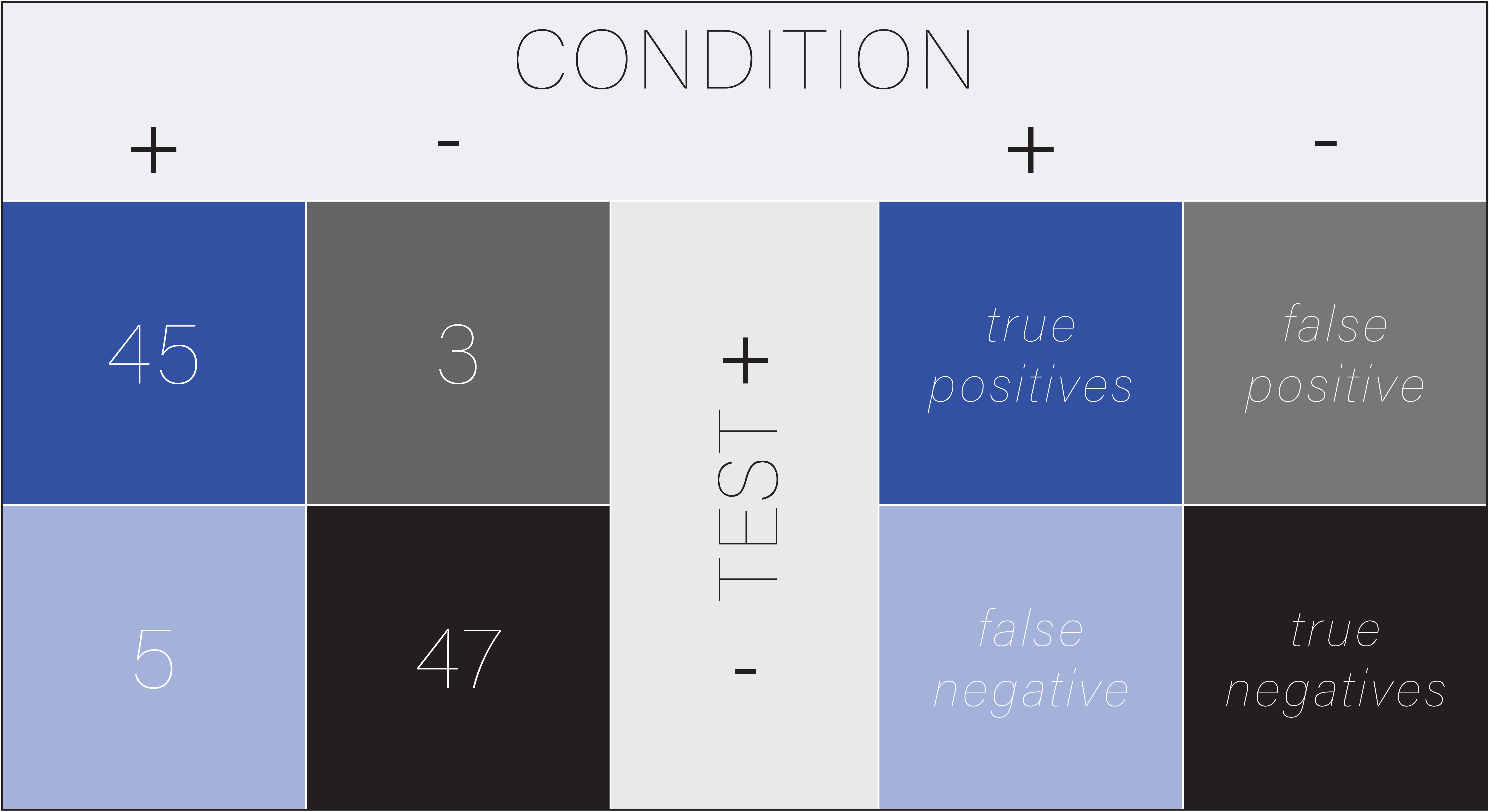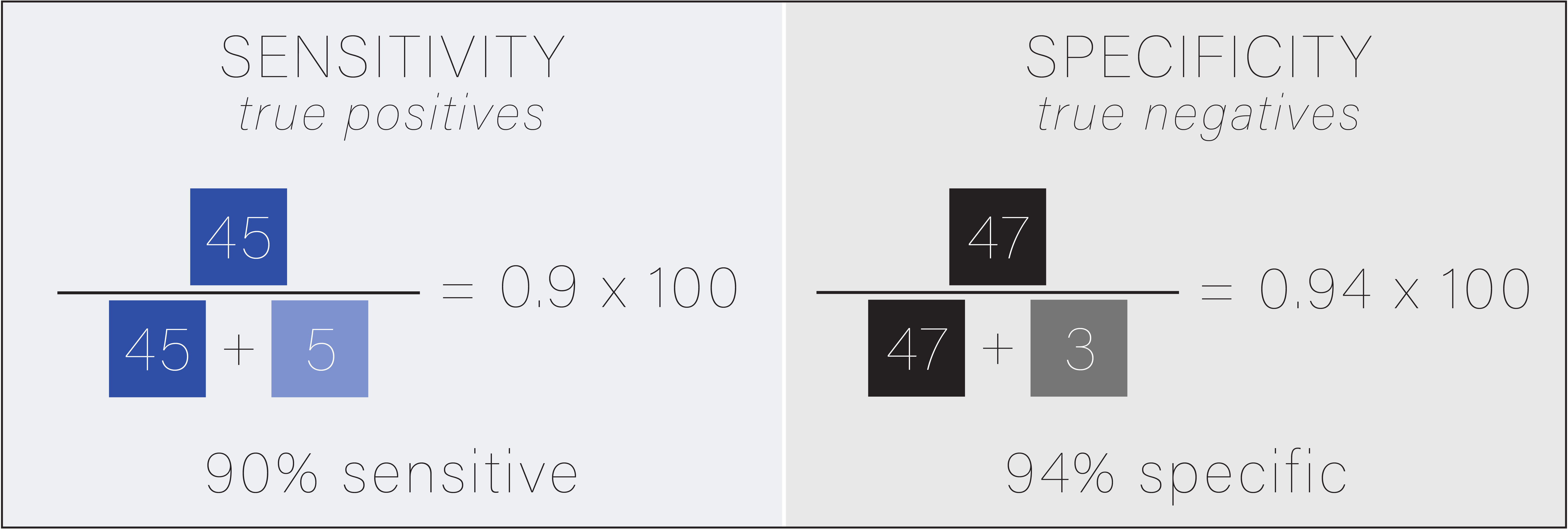What are Sensitivity and Specificity?
These are terms used in research and clinical settings that help delineate how applicable a diagnostic test or research outcome is for a definite population, demographic, or health condition. In short, sensitivity and specificity are descriptive concepts with mathematically determined values that highlight the clinical utility and diagnostic validity of a particular test.
Sensitivity
Sensitivity values indicate how likely diagnostic tests are to uncover “true positives.” In other words, how often is a test that is looking for a health condition correctly identifying the persons with said condition?
Example: let’s say 50 out of 100 people have the condition that the test is looking for. When we apply the test to these 100 people, it correctly identifies only 45 out of the 100 people with the condition as having the condition (true positives), and incorrectly identifies the other 5 individuals with the condition as not having the condition (false negatives). This amounts to a test that is 90% sensitive.
Specificity
Specificity values indicate how likely diagnostic tests are to uncover “true negatives.” In other words, how often is a test that is looking for a health condition correctly identifying the persons without said condition?
Example: let’s say 50 out of 100 people don’t have the condition the test is looking for. When we apply the test to these 100 people, it correctly identifies only 47 out of the 100 people without the condition as not having the condition (true negatives), and misdiagnoses the other 3 individuals without the condition as having the condition (false positives). This amounts to a test that is 94% specific.


There are very few diagnostic tests with sensitivity and specificity values of 100%, but the closer a test can get to 100% the better its diagnostic value. When using these terms in clinic, a quick way to remember how to apply them is through a mnemonic:
SNOUT
When a test has high sensitivity (i.e. strong ability to find true positives) a negative result helps rule out the condition.
- Sensitive test
- Negative result
- rules OUT condition
“SNOUT, rule it out”
SPIN
When a test has a good specificity (i.e strong ability to find true negatives) a positive result helps rule in the condition.
- Specific test
- Positive result
- rules IN condition
“SPIN, rule it in”
Summary

Understanding how likely a diagnostic test is to correctly identify a person with or without a suspected condition is an important consideration for deploying the test in the first place. That is why, when considering whether or not to preform a diagnostic test, it is important to consider the validity of that test (e.g. sensitivity and specificity) in order to provide the best possible care. Over, under, and misdiagnosis cost patients and the healthcare system money and time. Additionally, some diagnostic tests are invasive and the possibility of patient harm should be weighed against the test’s diagnostic value and whether or not novel findings will significantly inform treatment decisions.

